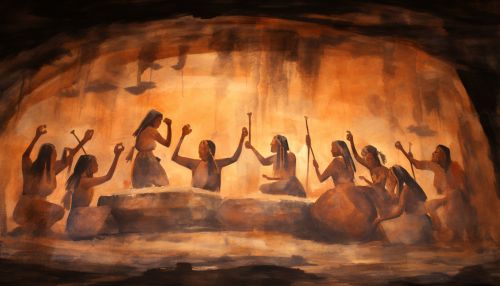Evolution of language
Origins of Language
The origins of language remain shrouded in mystery due to the lack of direct evidence. Theories abound, ranging from the idea that language evolved from gestures to the notion that it is a genetic development. The ability to produce speech and the capacity for grammar are two distinct aspects of language that may have evolved separately.


Evolutionary Theories of Language
The evolutionary theories of language are based on the premise that language is a complex adaptation that has evolved to solve specific problems of communication. These theories propose that language evolved from earlier pre-linguistic systems among our primate ancestors.
Continuity Based Theories
Continuity Based Theories posit that language is so complex that it must have evolved from earlier pre-linguistic communicative systems among our primate ancestors. This theory suggests a gradual evolution of language, with no clear line between language and non-language.
Discontinuity Based Theories
In contrast, Discontinuity Based Theories suggest that language, as a unique trait which separates humans from other animals, could not have evolved from any pre-existing animal communication system.
The Role of Genes in Language Evolution
The FOXP2 gene is the first gene that has been implicated in language development. Mutations in this gene cause a speech and language disorder. This discovery has led to a great deal of research into the genetic basis of language.
The Evolution of Writing Systems
The evolution of writing systems is a significant part of the broader evolution of language. Writing systems evolved independently in several areas of the world, and they represent a major advancement in the evolution of complex societies.
The Evolution of Language Families
Language families are groups of languages that have a common ancestor. The study of these families, known as comparative linguistics, provides significant information about how languages evolve over time.
The Evolution of Modern Languages
Modern languages are constantly evolving. Changes in culture, technology, and contact with other languages all contribute to this ongoing evolution.
